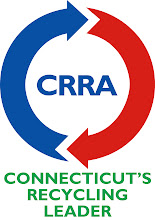Recently we’ve come across a couple of instances where self-styled environmentalists cherry-pick facts and use junk science in an attempt to needlessly scare people about trash-to-energy. There is an abundance of air emission data in the public domain. Depending on what one wants to show, one can choose data sets to suit one’s purpose.
The Connecticut Department of Environmental Protection’s Title V Emissions Inventory collects data on criteria pollutants. Criteria pollutants are a group of air pollutants that can cause smog, acid rain and adverse health effects. The six criteria pollutants about which DEP gathers information are nitrogen oxides and volatile organic compounds (which can form ozone), sulfur oxides, carbon monoxide, particulate matter and lead. The U.S. Environmental Protection Agency has established National Ambient Air Quality Standards for each of the criteria pollutants. Connecticut is in attainment with all of these except for ozone and parts of Connecticut are not in attainment of the standard for fine particulates.
There were six industrial sources of criteria pollutants given in the 2003 Title V Emission Inventory for the City of Hartford. CRRA’s Mid-Connecticut facility is the largest of these and accounts for the largest share of these emissions, mostly nitrogen oxides and carbon monoxide. The Mid-Connecticut Project trash-to-energy facility is in compliance with all provisions of its state and federal air permits and all applicable air regulations and standards. This facility is regularly inspected by DEP and has an excellent record of environmental performance and safety.
Click here for results of emissions tests of all CRRA trash-to-energy facilities dating back to 2001. See for yourself.
It must be noted that there are many other sources of air pollution in Hartford such as the hundreds of thousands of cars and trucks that use I-91, I-84 and the streets of the city every day. There are numerous businesses whose air emissions fall below the Title V reporting threshold. These sources do not show up at all in the DEP’s Title V Emissions Inventory.
Looking at the same 2003 Title V Emission inventory for the City of Bridgeport shows four industrial sources of criteria pollutants. CRRA’s Bridgeport facility accounts for less than 20 percent of these. Once again, this facility is in full compliance with all applicable emissions limits. Meanwhile, I-95, spanning the breadth of Fairfield County, is one of the most congested freeways in the United States.
While criteria pollutants are a concern, the EPA has designated over 650 toxic chemicals for reporting under the Superfund Amendments and Reauthorization Act (SARA). Facilities who deal in large quantities of these toxic chemicals are required to annually report their releases to the environment. In 2005, the latest year for which Toxic Release Inventory data is available, 1,266,576 pounds (633 tons) of these were released to the environment in Hartford County alone by 95 different facilities. These chemicals include aromatic hydrocarbons and heavy metals. CRRA’s Mid-Connecticut RRF is not responsible for a single pound of these toxic releases.
A similar picture is seen in Bridgeport. In 2005, the latest year for which Toxic Release Inventory data is available, 618,859 pounds (309 tons) of these were released to the environment in Fairfield County alone by 65 different facilities. These chemicals include aromatic hydrocarbons and heavy metals. CRRA’s Bridgeport RRF is not responsible for a single pound of these toxic releases.
There are many ways to look at air emissions. Looking at sources within a particular city’s limits makes little sense when a breeze can carry pollutants across borders. Typically, environmental professionals speak of “airsheds,” larger areas that are subject to the same forces of pollutant transport, industrial activity and weather. Efforts to control nitrogen oxides are undertaken on a regional basis encompassing dozens of states in the eastern United States.
CRRA’s four trash-to-energy facilities serve a vital purpose by safely disposing of most of Connecticut’s solid waste while at the same time generating electricity that would otherwise come from imported oil. There are air emissions from these operations. They are carefully limited, lawfully permitted and continuously monitored. The alternative to WTE is landfilling garbage, which then decomposes into methane, a potent greenhouse gas. Connecticut’s trash-to-energy facilities are an asset to the state that we can be proud of.
Click here to get the facts about Connecticut's trash-to-energy plants.
Monday, December 3, 2007
Junk science and scare tactics
Labels:
Bridgeport,
CRRA,
emissions,
Hartford,
junk science,
trash-to-energy
Subscribe to:
Post Comments (Atom)

1 comment:
Post a Comment